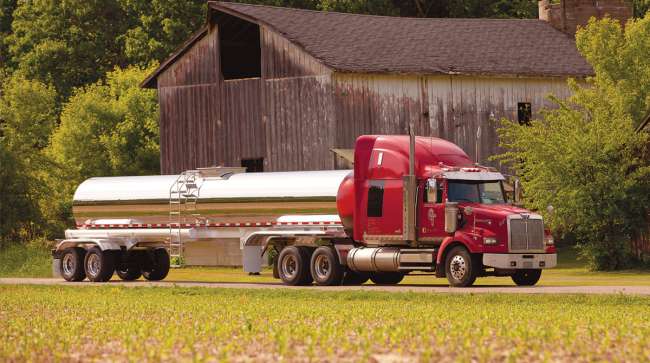Senior Reporter
PHMSA Proposes Easing Burdens for Tank Truck Drivers

[Stay on top of transportation news: Get TTNews in your inbox.]
The U.S. Pipeline and Hazardous Materials Safety Administration has issued a proposed rulemaking that would reduce burdens while maintaining safety measures for U.S. truck drivers by simplifying hazard communication requirements for gasoline and other fuels that are transported in tanker trucks.
PHMSA said the proposed rule, announced earlier this month, would provide nearly $100 million in annual cost savings for businesses and consumers. It also would enhance safety standards across highway, rail and vessel modes of transportation.
“Hazardous materials are a significant share of the essential goods routinely shipped in the United States, and the administration is working to make it more affordable and straightforward to safely move these materials through our supply chains,” Transportation Secretary Pete Buttigieg said in a statement.
Specifically, the proposed rule updates and modernizes regulations to accommodate the latest technologies, business practices and understanding of hazardous materials, including updates in packaging practices for hazmat transportation, PHMSA said.

Lusk
“Key aspects include easing hazard communication requirements for truck drivers, expediting tank car design reviews for rail safety, and modernizing standards for agricultural equipment,” said William Lusk, director of government relations at the National Tank Truck Carriers. “These changes are designed to reduce regulatory burdens and improve supply chain efficiency.
“It is important to note that many of these proposed changes result from NTTC policy letters and/or comments and questions raised during Federal Motor Carrier Safety Administration and NTTC cargo tank workshops,” Lusk added.
Some of the proposed changes originated from technical information sessions held in 2005 by NTTC and the Truck Trailer Manufacturers Association, according to PHMSA.
An NTTC analysis said the proposal would initiate a number of actions related to hazmat hauling, including:
- Revising registration requirements to allow for electronic submission procedures
- Creating cargo tank facility modification, suspension and termination procedures
- Adding a sixth row to specify that a cargo tank may display the UN ID number of the petroleum distillate fuel with the lowest flash point
- Clarifying the use of tank vehicle endorsement or hazardous materials endorsement training to fulfill the hazardous materials training requirements
- Revising definitions for cargo tank, cargo tank motor vehicle and minimum thickness, and adding definitions for various cargo tank motor vehicles
- Specifying that all equipment and instruments used to test cargo tanks must be calibrated, with appropriate documentation
- Allowing for the use of video cameras or video optics equipment for any inspection or test
- Requiring that the registered inspector consult with the owner or motor carrier to determine if materials are corrosive or reactive to the cargo
The proposal is open for public comment for 90 days following its publication in the Federal Register.
“The benefits of streamlining these hazmat regulations will impact every job and industry throughout our economy and save an estimated $1 billion in supply chain-related costs for the next decade,” PHMSA Deputy Administrator Tristan Brown said in a statement. “This proposal also leverages the latest data and transportation technologies to build on significant progress the Biden-Harris administration has been making to ensure America’s supply chains are the strongest, safest and most efficient in the world.”
McLeod Software CEO Tom McLeod explores the potential for artificial intelligence to boost efficiency and build resilience. Tune in above or by going to RoadSigns.ttnews.com.
PHMSA, in conjunction with the Federal Motor Carrier Safety Administration, developed the proposed amendments specific to enhancing safe highway transportation of hazardous materials. During meetings, PHMSA and FMCSA began developing a list of issues, concerns and requests for clarifications to be considered in a future rulemaking.
“Moreover, PHMSA and FMCSA have identified numerous advancements in industry practice, as well as potential safety incidents, over the course of the past 17 years,” PHMSA said. “This rulemaking aims to address the safety concerns raised by industry stakeholders.”
Want more news? Listen to today's daily briefing below or go here for more info:


